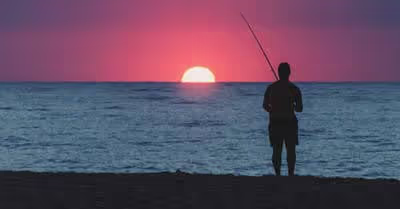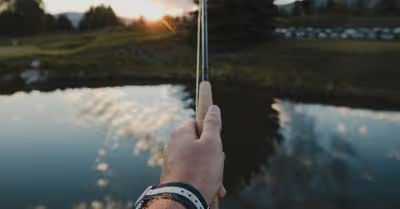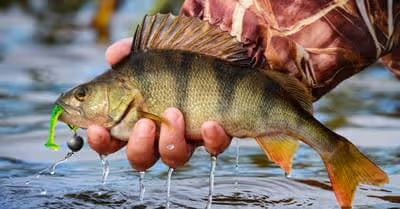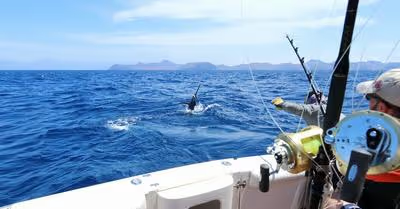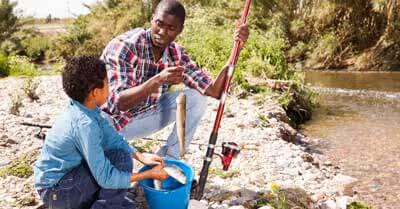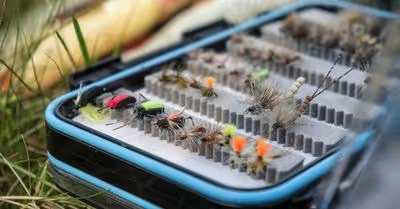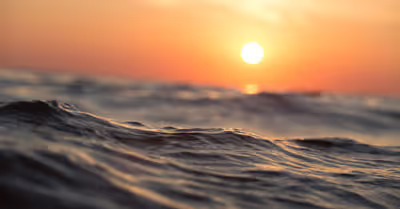Table of Contents
The Best Time to Use Surface Poppers
Although you can use surface poppers anytime except at night when you can consider using Danny-type surface swimmers, you should only use them at the best times. In other words, it’s best to use surface poppers when fish tend to feed at the surface and are more receptive to a topwater presentation.
The first thing to do is to avoid using surface poppers during winter when fish are more lethargic and feed at the bottom. Common sense dictates that they won’t even see your surface poppers and this is a clear cue that you won’t have lots of bites. That being said, the best time to use surface poppers is during spring or summer when the water temperature is increased. This is because warm water temperatures do recharge and revitalize fish by heightening their metabolic rates, which, in turn, prompt them to feed more often and with robustness.
Another good time to use surface poppers is when there are lots of insects, grasshoppers, and crickets. This is a very clear cue that various fish species in both freshwater and saltwater will be lurking on the water surface looking for a quick and easy meal atop the water. Similarly, predator fish will be patrolling the water surface when schools of baitfish ripple on the water surface or group around shallow water structures.
You can also use surface poppers when you see lots of fish feeding near the water surface or when birds dive-bomb into the water to grab a meal. In essence, any tell-tale sign that fish might be feeding on the water surface is a good time to use surface poppers.
Where to Use Surface Poppers
You can consider using surface poppers in various fishing situations. But because, the main aim is to have more bites and watch the thrilling action, using surface poppers in clear waters is ideal. There are also other key rules as to where you should perfectly use surface poppers.
When fishing in saltwater, the best place to use surface poppers is around water structures both natural and man-made. Predator fish generally patrol these areas looking for baitfish or food. You can also target areas with current. This is because predator fish are opportunistic and will aggregate around the lee of the current to pick off an easy meal. As such, the best places to fish with surface poppers in saltwater include rocky headlands, shallow inshore reefs, bridge pylons, foreshores, marker buoys or any other area where your targeted fish will be surface patrolling for an easy meal.
In freshwater, the best places to fish with surface poppers are in highly oxygenated areas such as bubble lines in streams. In most cases, predator fish like trout will lurk on the surface out of the main current, lapping up the oxygen-rich water while waiting for cricket or any form or insect to float or fly by. You can also fish with surface poppers around submerged trees or tree canopies that overhang along the water edges. This is because predator fish often patrol these areas hoping for a bug, hatchling or a hapless insect to drop into the water or fly by.
In essence, you should key in on areas where both predator and prey fish will naturally aggregate, as well as in areas with currents. By doing this, you’ll up your chances of being successful at using surface poppers.
Features of the Best Poppers
When planning to fish with surface poppers, it’s of great importance that you choose poppers that will attract fish perfectly; something that promises strong or moderate action in all types of situations.
With that in mind, a surface popper should be cup-faced and noisy. As you pull the popper along the water surface with a sweeping action of the fishing rod, the popper should be able to displace water and, in turn, create a commotion. This commotion is crucial given that the predator fish will interpret it as a distress sound of a struggling prey and will attack it knowing that it’s an easy target.
Again, a good surface popper should be able to perfectly work with all types of fishing rods (heavy, medium, light, long or short). It should also be suited for all water conditions (freshwater, saltwater, calm or rough waters). As such, surface poppers like Rebel Pop-R and Arbogast Hula Popper are some of the best surface poppers. All in all, choose a popper that perfectly resembles the prey of the fish that you’re looking to catch.
Rod and Tackle
A medium-action fishing rod is perhaps the best rod for fishing with surface poppers. This is because the rod should have some play in it so that you can easily twitch it to make the popper move and create sounds that will attract predator fish. Again, such type of a rod will make it a lot easier when setting the hook and fighting the fish. You should, therefore, refrain from a rod that’s too stiff as this can rip the hooks out of the fish’s mouth.
In terms of the fishing line, you can consider using monofilament or a braided line. These lines are generally light and will float on the surface because they are stiff and not stretchy. You should simply avoid fluorocarbon lines as they tend to sink given that they’re generally stretchy and this will significantly affect the use of surface poppers. In short, use a fishing line that will ensure that the popper floats.
You should also make sure that the hooks are sharp and of good size. Needless to say, large surface poppers can be ideal for larger fish while small poppers are ideal for small fish. When it comes to knots, you can consider using a loop knot or a tight-clinching knot to connect the popper to the line to give it more action.
How to Use Surface Poppers
Although surface poppers are easy to cast, here’s how to get more from these incredible fish magnets.
Provoke Reaction Strikes
When it comes to using surface poppers, the accuracy of your presentation matters a lot. While their subtle disturbance and noise, as well as a realistic profile, cannot be ignored by predator fish, you have to maximize these features by provoking reaction strikes. The first thing is to place the surface popper where your targeted fish lurks. For instance, putting the popper next to your target will pay serious dividends as your targeted fish will find it irresistible to go for the kill.
You should also add chaos and change direction of the surface popper by twitching the fishing rod tip from side to side with each crank of the rod’s handle. This is to create the “popping” sound and movement that will attract the predator fish. You should, however, make sure that you don’t do it chaotically as this may spook the fish. You can also practice roll casts and underhand pitches as they’re a great way to present a popper to your surface targets.
Repeat the Action
Keep in mind that your target fish will likely miss the popper on initial strikes, especially if you’re fishing in rough or murky waters. You should, therefore, repeat the action to help them zero in. Make sure that you use a cadence that’s easy for the fish to anticipate. Using a straight retrieve, start with a quick âpop, pop, pop, and pause’ then repeat until you get a bite. Predator fish will respond differently to surface poppers so it’s in your best interest to stay calm, be patient, and wait for the bite.
Wait for It
If you get a strike on your popper, you shouldn’t be in a hurry to reel in. In most cases, you’ll realize the hook hasn’t set in properly and the fish might get away if it realizes that it’s a setup. For this reason, you should delay for a split second so that the fish can fully inhale the popper and turn away. Just give it about two seconds so that the hook sets in properly and make it impossible for the fish to spit out the popper, and the fish will be all yours.
Always be on the Action
You should be keen enough to time your first pop-inducing shake of the rod to coincide with that moment when the popper hits the water. In other words, your popper shouldn’t just sit still in the water as it may appear like a piece of wood or plastic to the fish. You should, thus, start popping immediately and keep it on the action so that it appears like something worth going for. You’ll head back home empty-handed if your popper sits still on the water with no action.
Conclusion
Using surface poppers is one of the most exhilarating and thrilling ways to catch fish. You’ll be surprised at the number of fish that you can catch at any given time of the day, so it’s important to have surface popper in your tackle box just in case you come across a nice looking spot. Better still, the hoots and cheers that will follow when your rod loads up and your reel begins singing will make your fishing trip more fun!
Recent Articles



